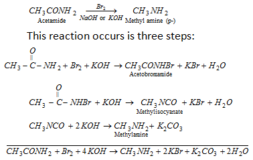Second order reaction

source: SlidePlayer
Second order reaction-
” A reaction is second order if rate of reaction is determined by variation of two concentration terms.”
Ex.1) Hydrolysis of ester by alkali-
CH3COOC2H5 + NaOH ———> CH3COONa + C2H5OH
Ex.2) Decomposition of NO2–
2 NO2 ———–> 2 NO + O2
Ex.3 ) Dissociation of O3 at 1000C-
2O3 ———> 3 O2
Ex.4) Thermal decomposition of Chlorine monoxide-
2 Cl2O ———> 2 Cl2 + O2
Ex.5) Reaction of Potassium persulphate with KI-
K2S2O8 + 2 KI ———-> 2 K2SO4 + I2
A) When concentration of both reactants are equal or two molecules of same reactant are involved-
A + B ——–>product
or
2 A ———> product
dx/dt ∝ (a- x ) 2
dx/dt = K (a- x )2
dx / (a – x )2 = K.dt
Taking integration of both sides,
∫ dx / (a – x )2 = K∫ dt
1 / (a – x) = Kt + C ——— eq.1
when t = 0 then x = 0
1 / a – 0 = K x 0 + C
C = 1/ a
Putting the value of ‘C’ in eq. 1
1 / (a – x) = Kt + 1 / a
K = 1/ t [ (1 / a- x) – (1/a)]
K = 1 / t [x / a (a – x)]
a = initial concentration
a – x = conc. of reactant after time ‘t’
B) When concentration of both reactants are different –
A + B ——–>product
initial conc. a b
conc. after ‘t’ time ( a- x) ( b- x)
dx/dt ∝ (a- x ) ( b- x)
dx/dt = K (a- x ) ( b- x)
By solving ,
K = [2.303 / t ( a- b )] log[ b ( a- x)/ a ( b- x)]
Characteristics of second order reaction –
1) Unit of ‘K’-
K = 1 / t [x / a (a – x)]
unit of ‘K’ = 1 / time ( mole litre-1 / mole litre-1 x mole litre-1)
unit of ‘K’ = litre mole -1 time-1.
2) The unit of velocity constant depends upon the units of concentration because,
unit of ‘K’ = litre mole -1 time-1
3) The time taken to complete a half reaction( half life period ) is inversely proportional to the initial concentration of the reactant.
K = 1 / t [x / a (a – x)]
If t = t1/2 then x = a/2
K = 1/ t1/2 [ (a/2) / a(a- a/2)]
t 1/2 = 1 / K [ (a/2) / a( a/2)]







